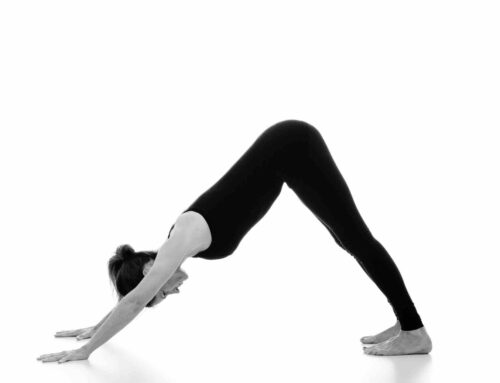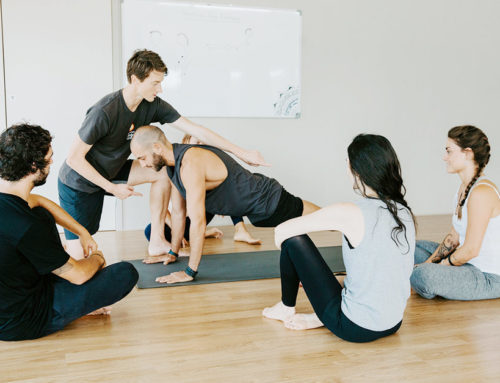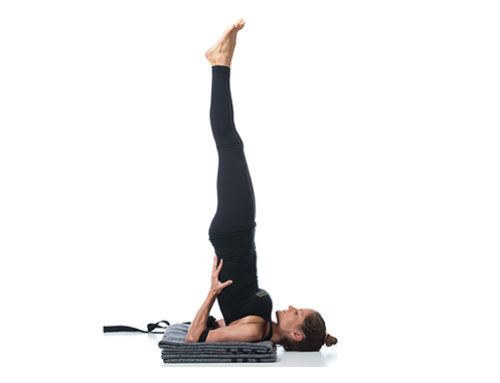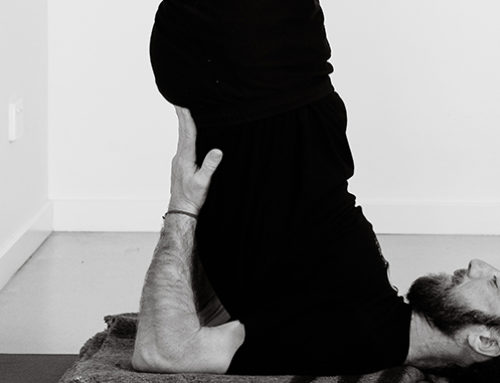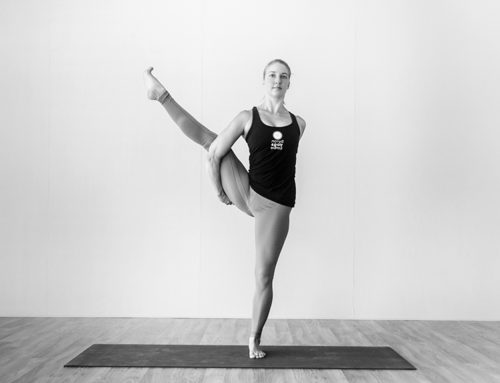Written by Stacey Clarke, Maitri Yoga

Each sitting pose has a purpose and benefits and is therefore a posture in itself; so learning how to sit has many more facets than just plonking yourself down on the ground.
The overlaying benefits for all the sitting postures are that hips, knees, ankles and groin muscles become more elastic. Breathing is made smoother and easier through relieved tension and hardness in the diaphragm and throat. Blood circulation increases around the body and whilst the spine is held steady the mind is pacified and the heart muscles are stretched (Iyengar, 2008).
In all of the open-knee sitting variations, Svadisthana, the second Chakra, is stimulated (Long, 2006), which affects your sensuality, sexuality, relaxation and openness.
Whether you are sitting for the pose itself, or to be in a stable base for pranayama (breathing exercises) or meditation you need to assume the correct alignment because you may be there for some time.
It is not just for pure yoga practice that you may find yourself sitting. There are many reasons to sit, from playing with a child to taking part in a lecture, or even watching the television. I know when I was studying for my 200hrs yoga teacher training, I found it very hard on the knees and although I had read from B.K.S. Iyengar that it gets less painful with practice it didn’t feel like it would at the time; so I advise you to alternate sitting poses and use props. Iyengar’s actual words were an encouraging “they will feel excruciating pain around the knees. By perseverance and continued practice the pain will gradually subside”.
The notion that you cannot meditate or practise pranayama effectively without sitting in the Lotus pose is not true – although some positions are thought to be more effective in reaching higher states than others. It is more important that you are reflecting the true nature of an Asana, which can be translated from Sanskrit to mean ‘comfortable seat’, so that you can stay in the one position without fidgeting.
Anatomically, all yoga poses become more comfortable when the axis of the long bones is stacked with the direction of gravity. When correctly aligned, the bones are taking the weight, which means less muscle force is needed (Long, 2006). However, if you’ve sculpted your posture incorrectly through hunching over a desk or constantly leaning on one leg, it may be very uncomfortable at first to sit the way nature intended. Most minor imbalances can be reversed over time, but it’s advisable to start practising good posture as early as you are aware, to lessen the long-term damage of postural extremes, such as Kyphosis (where you’re body is hunched forward).
All sitting poses derive from Dandasana – The Rod Pose, where your legs are outstretched in front of you. However, the poses recommended for long-term sitting are cross-legged variations, deriving from Padmasana – Lotus Pose, or Virasana – Hero/Warrior pose.
Listed below are a number of suitable sitting poses. You can find a photo of each by clicking through to our Facebook album.
Caution: If you suffer from knee pain or injury please take care when trying these sitting postures and remember that for some people they are not advisable. Please seek medical advice for your individual case if you’re uncertain.
 |
Sukhasana/Swastikasana – Easy/Cross-legged pose – Larger ImageMost people will equate sitting crossed legged with school assembly time and I can almost guarantee that it will feel really strange to cross your legs the opposite way than you normally do. However, as I mentioned above, it is very important to practice this, and all seated poses equally on both sides.
Technique:
|
 |
Ardha Siddhasana – Half Accomplished/Adepts pose – Larger ImageThis is fairly similar to the cross-legged pose, but your knees will end up closer to the floor. Remember not to force your legs down though, the longer you practice, the more your muscles will relax into the extended version of the pose.
Technique:
|
 |
Siddhasana – Accomplished/Adepts pose – Larger ImageThis is the full version of the pose above, so you may want to make sure that your very comfortable in Half Adepts before you try it.
Some say that this pose is the most important among all asanas, and according to Iyengar it is thought to purify 72,000 nadis. I think that’s a good enough reason to try this one! Technique:
|
 |
Ardha Padmasana – Half Lotus pose – Larger ImageGetting into a full Lotus pose may take a long time, so to ensure the ligaments have time to slowly adjust to the stretch it’s good to try this variation for a while.
Technique:
|
 |
Padmasana – Lotus pose – Larger ImageThis is seen as the key pose for reaching a truly deep meditative state, where Kundalini can be roused, and as such, you will often see images of Buddha in Padmasana.
It is the most extreme of all the sitting postures so please be careful to your body and make sure all the preceding asanas are mastered before you try this. Technique:
Note: Make sure your ankles are aligned so that your feet don’t sickle (over-rotate inwardly). This will reduce the likelihood of knee pain.
|
All of the poses listed above can be made more achievable through the use of props.
For those with tight Adductors (inner thighs), your knees will be higher off the ground, which may cause an aching sensation because the muscles have to work harder when there’s a higher center of gravity. This sensation can be eased by placing folded blankets, blocks or bolsters under them and once there is less strain the muscles will find it easier to relax, thus increasing flexibility and lessening the need for props as time goes by.
To increase the pelvic tilt, and therefore open your groins and help with correct alignment, you can place a folded blanket, block or bolster under your buttocks.
For those with bony ankles, like myself, the sitting positions are more comfortable with a blanket under the ankles, or between the ankle and leg, depending on what kind of surface you’re on and how flexible you are that day.
 |
Virasana – Hero/Warrior pose – Larger ImageThis sitting pose does not involve crossing your legs, so it may suit you if you find all the above postures extremely uncomfortable because you’re tight, you’ve already been cross-legged for a long time, or your knees are very painful.
Technique:
|
A note on pregnancy and sitting postures
While all of these postures are suitable for pregnant ladies, the same rules apply as in general – to try the more simple poses like Sukhasana first before moving on. The Relaxin that’s released during pregnancy will increase one’s suppleness, therefore allowing some to manage the more difficult poses when they wouldn’t be able to normally. Please be mindful of this, so that overstretching doesn’t occur. If you have never tried the Half Adepts pose before becoming pregnant then please don’t try and jump straight to full Lotus pose.
So, after trying out as many as your body will allow, what is your most comfortable seat? It would be great to see your favourite sitting poses posted on our facebook wall, or send to marketing@byronyoga.com and I’ll add them to the album.
Sources:
Astanga for You, Tara Fraser (2005)
Light on Yoga, B.K.S Iyengar (1979)
The Complete Book of Yoga Meditation for Pregnancy, Theresa Jamieson (2000)
The Key Muscles of Yoga: Scientific Keys, Volume 1, 3rd Edition (2006)
Yoga: The Path to Holistic Health, B.K.S Iyengar (2008)

